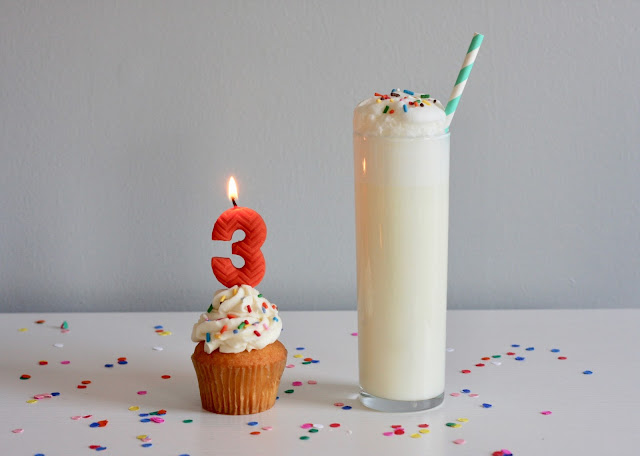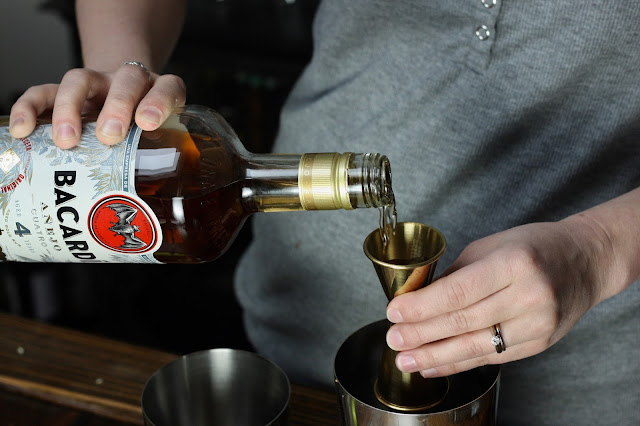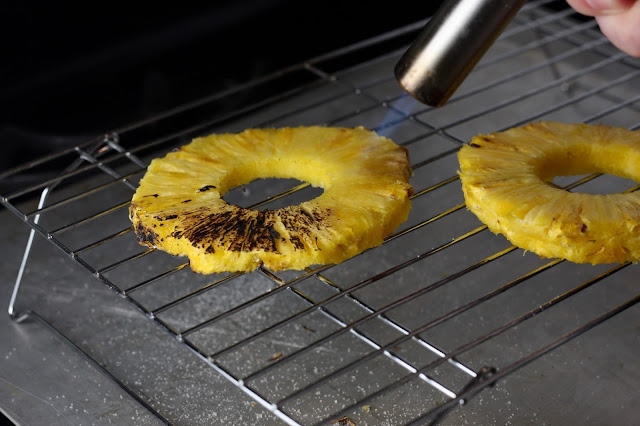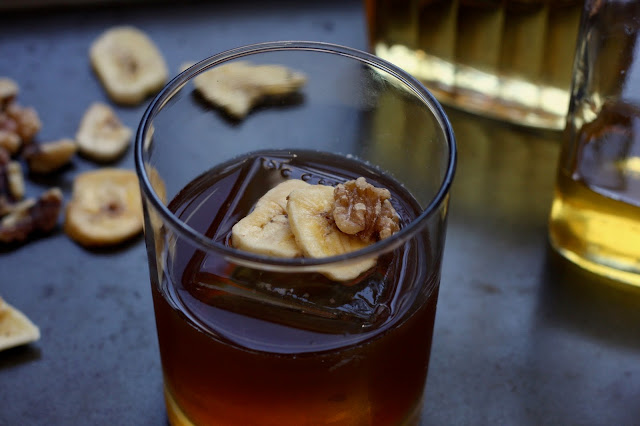I'm celebrating! Today Garnish is three years old. I started the blog back in 2015, while I was still in graduate school. My
first post was on building a basic home bar. And honestly, it holds up pretty well, except for the inclusion of Punt e Mes as the recommended sweet vermouth. (I love Punt e Mes, but it's more bitter than most vermouths; I'd recommend Carpano Antica Formula or Cocchi Vermouth di Torino now.) Live and learn!
Since that first post, so much has happened that I never expected. For one thing, there are actually people like you out there
reading this blog, which in itself is pretty crazy and amazing. My home bar has grown beyond the few bottles in that first post to a ridiculous, sprawling collection that recently spilled over into the neighboring bookcase. I've gotten the opportunity to attend industry events, work with brands, and connect with other cocktail lovers. The biggest surprise has been
Instagram - just this month, I hit 10,000 followers, with is
insane. It has easily been the best platform for connecting with other home bartenders, and if you're not on there, I highly recommend you check it out.
Like any good celebration, this one calls for a drink! I chose the Ramos Gin Fizz to celebrate this milestone because I always thought of it as the Mt. Everest of cocktails. I tried to make one early on in my home bartending days and failed utterly; my foam was pitifully nonexistent and the flavor was just off. After that I assumed it was a drink that was just beyond my skill level. But no longer! I made a Ramos Gin Fizz. And guess what? You can, too.
The only ingredient in a Ramos Gin Fizz that you might not have on hand is orange flower water. This is a clear liquid distilled from orange blossoms that has a flowery flavor and fragrance. You can find this at many liquor stores or
buy it online. You can also skip it if you must. Your Fizz will be lacking that hint of floral flavor that makes it extra special, but it will still be quite tasty.
The other big challenge when making a Ramos Gin Fizz is getting that foam just right. There are a lot of tricks you can employ. A reverse dry shake with a blender ball (see my notes in
this recipe) is the best way I've found to get that really nice foam.
Actually, that's a lie. I'll come clean - the best way to get this great foam, and the way that I got the foam in the picture, is with an electric mixer. I know, I know. That must technically be cheating or something. And it creates some bubbles that are a bit too large for most egg white cocktails. But for the Ramos Gin Fizz, which benefits from a big, stiff topping of foam, an electric mixer with a whisk attachment can save your arms some serious work and basically guarantee that you'll get that beautiful drink you're striving for. And if anyone has a problem with that, then tough.
All that mixing and shaking will be worth it, I promise. The Ramos Gin Fizz is a heavenly drink. I've often seen it compared to a
Piña Colada, which is sort of bizarre since they don't share a single ingredient in common. I think it's because they both have that perfect combination of creamy, sweet, and sour. The Ramos Gin Fizz just looks and tastes so
special, from the magical cap of foam to the hint of orange flower water. It's a cocktail that shouldn't be missed.
History: The Ramos Gin Fizz is a New Orleans classic, so of course it was born there. It was invented by Henry C. Ramos in 1888 at the Imperial Cabinet saloon at the corner of Gravier and Carondelet. He called it a New Orleans Fizz. When he sold his bar and opened a new one right down the street called The Stag in 1907, he took the iconic recipe with him there. It was wildly popular. This was actually something of a problem, because Ramos' recipe required a staggering 12 minutes of shaking. To keep up with demand, he employed an assembly line of "shaker boys" who would each shake the drink for a minute or two so that they didn't become exhausted.
Ramos was actually a supporter of the temperance movement, quite surprising for someone who made a living slinging drinks. He discouraged any kind of drunkenness or misbehavior at his bar, and closed at the respectable hour of eight o'clock. When Prohibition began in 1919, he was quick to shutter The Stag and switch to mixing paint instead of cocktails. He died in 1928.
When Prohibition was lifted, Ramos' son sold the rights to the New Orleans Fizz to the Roosevelt Hotel, which trademarked the new name "Ramos Gin Fizz" in 1935. Their Sazerac Bar remains the most famous place to order one today. It was famously the favorite cocktail of Huey P. Long, who went so far as to fly one of the Roosevelt's bartenders to New York to teach the folks at the New Yorker Hotel how to make the drink properly for him when he was visiting. If you think that sounds a bit silly, you've never seen the bartenders at the Roosevelt make a Ramos Gin Fizz. It's a theatrical production, with white-suited bartenders energetically shaking the drink, performing an impressively high pour, and then doing that final top-up with club soda that causes the foam to almost miraculously rise above the rim of the glass. Ordering one there is a must if you visit New Orleans.
Thank you all so much for reading - here's to another three years! Cheers!
Ramos Gin Fizz
1 1/2 oz. gin (preferably Old Tom)
1 oz simple syrup
1 oz. heavy cream
1 oz. egg white
1/2 oz. lemon juice
1/2 oz. lime juice
3-4 drops orange flower water
2 drops vanilla extract (optional*)
Club soda
Combine all ingredients except club soda in a shaker with ice and shake well to combine. Strain out the ice and return to the shaker, adding a blender ball or spring. Shake very well to froth up the egg whites, 30-60 seconds. Alternatively, transfer the mixture to a mixing bowl and blend with an electric mixer fitted with the whisk attachment for 30 seconds.
Add a dash of club soda to the bottom of a tall Collins glass. Pour in the cocktail, raising the bowl or shaker as you pour to increase the distance between it and the glass - this helps the foam form. Top up the drink with club soda so that the foam rises above the rim of the glass.
*According to Stanley Clisby Arthur in his 1937 book
Famous New Orleans Drinks and How To Mix 'Em, "Veteran barkeepers differ violently - practically come to blows - over the inclusion of the two innocent drops of
extract of vanilla. Old-timers who worked for Henry Ramos in the past declare the original Ramos included no vanilla in its make-up. Others hold that the twin drops of extract wrung from the heart of the vanilla bean either make or break a real gin fizz - make it taste like heaven or the reverse." I will leave it up to you to decide where you stand on this divisive issue. Since I was having my fizz with a vanilla cupcake, I thought the two drops sounded like a lovely idea.
Recipe adapted from this video and from Famous New Orleans Drinks and How To Mix 'Em. (Note that the stated ounce and a half of orange flower water in the video is clearly a mistake!)
Historical information mostly came from Thrillist, Gin Foundry, Gambino's Bakery, and Famous New Orleans Drinks and How To Mix 'Em.




















